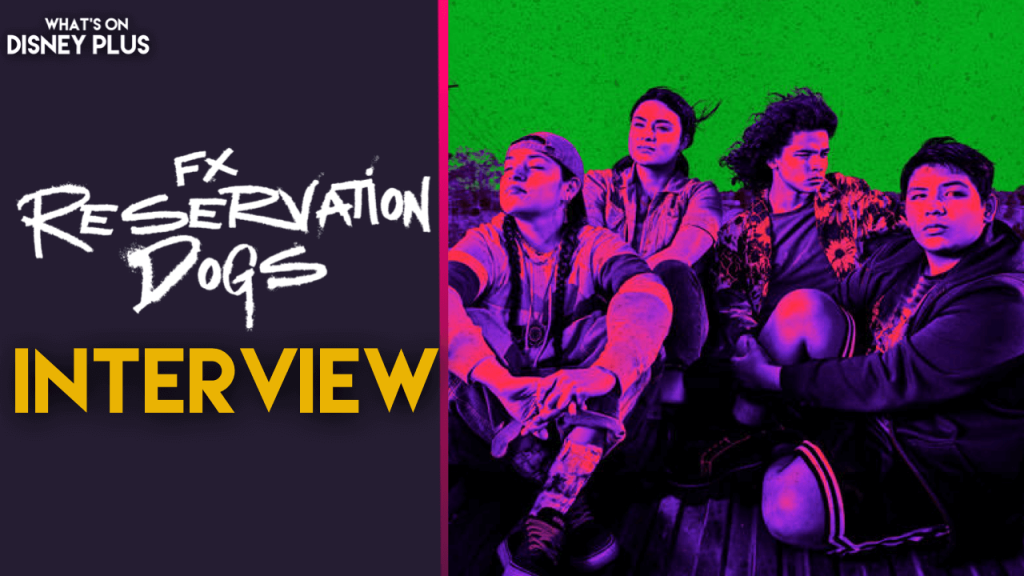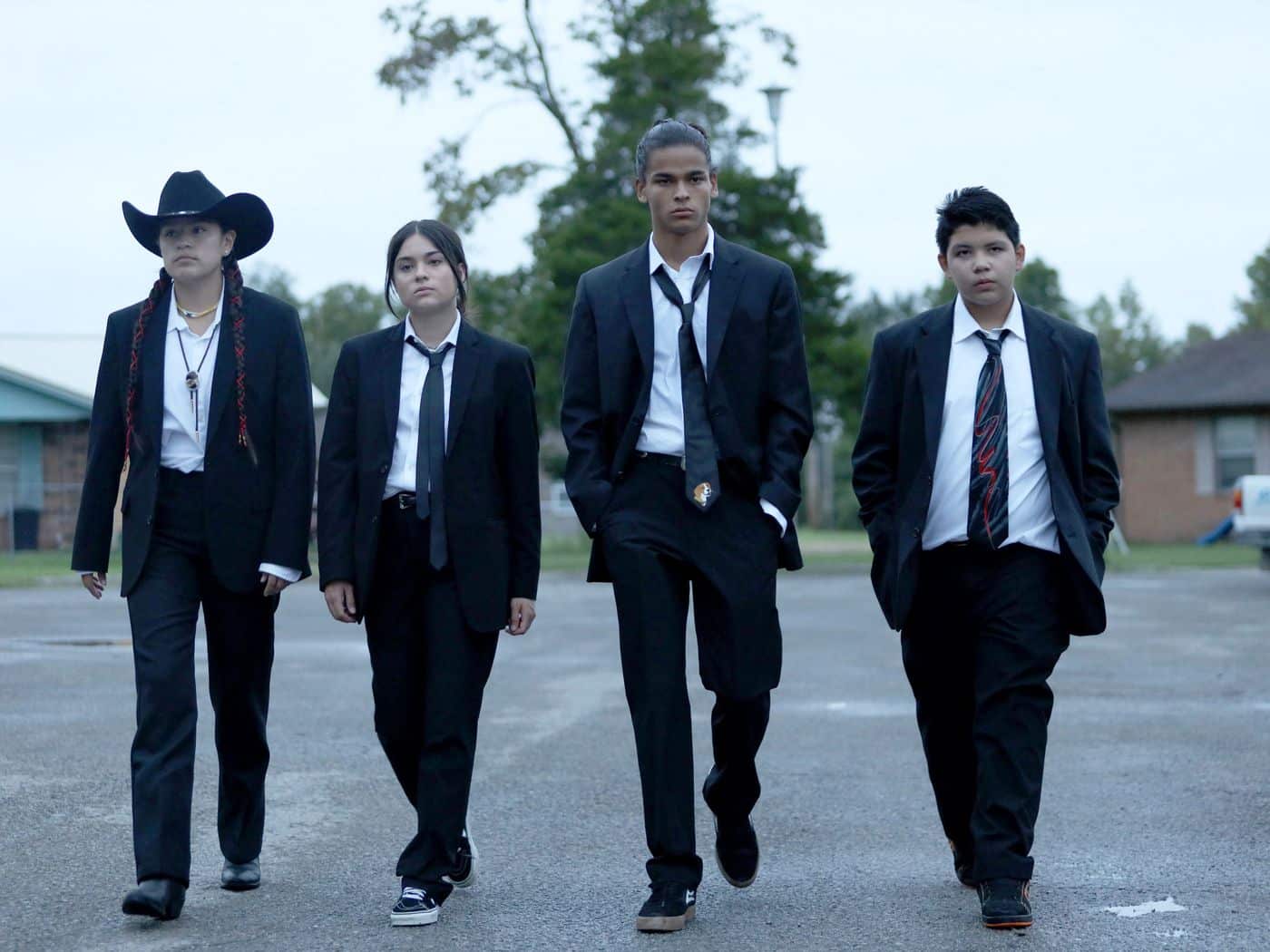
“Reservation Dogs” Editors – Patrick Tuck & Varun Viswanath | Exclusive Interview
The third and final season of “Reservation Dogs” is currently being released on Hulu in the United States and on Disney+ in Canada. The series is Co-Created by Sterlin Harjo and Taika Waititi, Reservation Dogs depicts the lives of four Indigenous teenagers in rural Oklahoma. Season three is the final season, and the Rez Dogs are stranded in California, where they have to navigate their way back home. This season is full of road trips, unexpected fathers, boarding schools, rumours, revenge, healing, and more.
Recently, I got to speak with the show’s editors, Patrick Tuck and Varun Viswanath, about their work on the hit FX series, along with other FX shows like “What We Do In The Shadows” and “Dave”.
How long does it roughly take to edit an episode of the show?
Varun – We shoot an episode for about five days, and if we keep to our schedule, we have an editor’s cut two days after that, so we’re working while the camera is shooting, and then we do a director’s cut for two days. And after that, it goes through network notes and Sterling’s notes. So I would say from the time somebody rolls the camera to when an episode is locked, it doesn’t happen all linearly, but I would say about a month to maybe five weeks. And it gets spread out because we take alternate episodes on a show like this. When I was doing director’s cuts on episode one, I was also doing the editor’s cut on episode three. And so we kind of checkerboard this across, so at one point in time, we might be working on four episodes.
How closely do you have to work with the director when editing?
Patrick – The best way to describe it is fun. I think Varun probably feels the same, but we’ve been very fortunate to work with directors who are really fun to work with and basically, we take our first pass, and we try to have conversations with the directors beforehand to understand what direction they want to go in, what tonally they’re trying to achieve. And we keep that in mind while putting it together, while also trying to introduce new ideas for tones or rhythms or feelings or points of view. And then we present those to the director, who then we have long conversations about all of those things with and then try to get the episode more in tune with what they were hoping for. And then it usually ends up in a place where it’s kind of in this in-between ground, and then it moves forward to the showrunner from there.
How does making a streaming show vary from making one for linear television?
Patrick -It doesn’t differ all that much, to be honest. It’s really about, I mean for me, it’s like how do we make the best thing? And whether we’re on a time crunch or we’re not on a time crunch, it’s always just about let’s aim for the best thing we can achieve and go from there.
Varun -I would say one of the things that we reluctantly do on broadcast shows is adding commercial breaks. That’s something that our show is kind of a little bit of a hybrid because, in the US, it airs as a show with commercials, so we have to prepare for that. And so there’s always a stage towards the end where it’s like, oh, do we really have to put a commercial break there? Can we just not let this run? And so that’s one thing, of course, and the schedules tend to be a little more lenient on streaming shows that have announced that we’re going to air on this day. So we tend to get a little bit more space in the schedule. And I suspect that’s one of the reasons why we get to do a little bit more heavy lifting in a streaming show versus, say, something that’s airing weekly on a broadcast network.
What’s been one of your highlights working on “Reservation Dogs”?
Varun – My highlight on the show is really working with the extraordinary acting talent that we have that come both from unexpected places like young actors that you haven’t really seen on any major productions before, they just come in, really hit it out of the park and it’s so wonderful to work with them. And we’ve had a steady stream of heavy hitter, a-list talent that come and do guest starring roles. And I think social media has already given this away, but Ethan Hawk is in an episode this season and I couldn’t cut away from him. It took me so much time to be like, how could I cut away from Ethan Hawk? And we had Mark Marin last season, and Bill Burr, the season before that. And there’s also been incredible Native American talent that has been waiting in the sidelines to be given an opportunity to be in a major production and to see all of these faces and voices on the screen has been an extraordinary experience.
Patrick -I think probably my favorite highlight is the opportunity to work on the finale of the show. And I’ve never worked on a finale of a show before, and so doing it for Reservation Dogs, which was already one of my favorite shows before I even worked on it, felt really special to me, and Varun and I actually worked on it together, which was an extra layer of fun collaboration to the whole thing. And we’re in love with these characters just as much as anyone who is a fan of this show. And to say goodbye to them was really meaningful and powerful in a lot of ways. And the show teaches you how to do that in such a powerful way that it was fun to be an audience member at the same time we were working on it.
What was the biggest challenge working on “Reservation Dogs”?
Varun – The biggest challenge, I would say the balance between comedy and drama. While a lot of it comes in the showrunner’s vision in the script, there are many times tonally, where we’ve had to find that balance after the fact. If we were really leaning too hard towards drama, we’d have to find ways to pull it back so that we can maintain that even balance. I wouldn’t say that it was a challenge that broke me, it was a challenge that I enjoyed very much. And I think it is the beating heart of the show, is to kind of be in both these spaces. So yeah, I would say that was my biggest challenge.
Patrick – It’s a tough question. I don’t think, to me, the way I try to approach things is if something is difficult or hard to figure out, it’s usually like Varun is implying it’s fun. In order to enjoy this job, you have to be willing to learn, you have to be willing to expand your toolset, and flex different muscles of editing and stuff like that. So yeah, anything that was challenging to me always had an incredibly positive outcome. You know what I mean? So I guess to me, the biggest challenge, I’ll go back to the finale again, is saying goodbye to these characters, crafting those scenes to figure out how to say goodbye to them without it being too heavy-handed or being too somber in tone and letting the tone of the show rise to the top was really fun to craft, but also challenging.
Patrick, when you joined the show for the second season, did you go back and watch the first season to try to match the tone and style?
Yeah, I mean I love the first season so much that I felt like it was ingrained in me already. But also I did go back before starting the job and studied a lot of Varun’s work and Gina Sanson’s work, who’s also an incredible editor and really figured out where they were landing jokes, how they were landing jokes, how they were balancing tones, which is fun. It’s fun to study other editors’ work and figure out, oh, how can I implement myself into this, but maintain the styles and approach that came before.
You can catch “Reservation Dogs” now on Hulu in the United States and on Disney+ in Canada.




